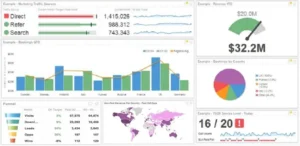Company mergers often involve combining multiple systems and databases into one unified system. Customer relationship management (CRM), specifically data merging in Salesforce.com instances, is one key area often impacted by a merger.
When two companies come together in a merger, they typically have their own Salesforce.com instances containing unique sets of data, including customer, sales, and contact information. In order to ensure the seamless functioning of the newly merged company, it is crucial to consolidate this data into a single Salesforce.com instance.
There are a few key steps to take when merging Salesforce.com data:
- First, identify the data that needs to merge. Identification includes determining which data fields are common and standard between the two instances and which need consolidation.
- Create a plan for how to merge the data. A good plan includes deciding which instance will be the “master” instance and how data will be transferred from the other instance.
- Clean and deduplicate the data. It is essential to remove any duplicate data to ensure that the merged data is accurate and complete.
- Test the merged data. Before going live, it is crucial to test the merged data to ensure that it is accurate and all the necessary data fields are present.
- Go live with the merged data. Once the data has been tested and is deemed accurate, it can be moved into the “live” Salesforce.com instance.
It is important to note that merging data into one Salesforce.com instance can be complex and time-consuming. Still, ensuring that the merged company has accurate and complete customer data is essential. It’s also important to consider the data’s security, privacy, and compliance.
Merging data into one Salesforce.com instance can be challenging, but your company can do it successfully with the right approach. It is important to work with a team with experience in Salesforce.com data migration and have a clear plan for the data merge process.







